High Power CO2 Lasers: Principles and Applications
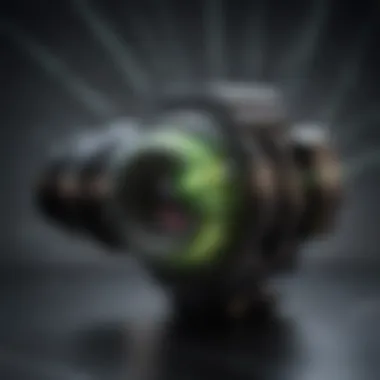
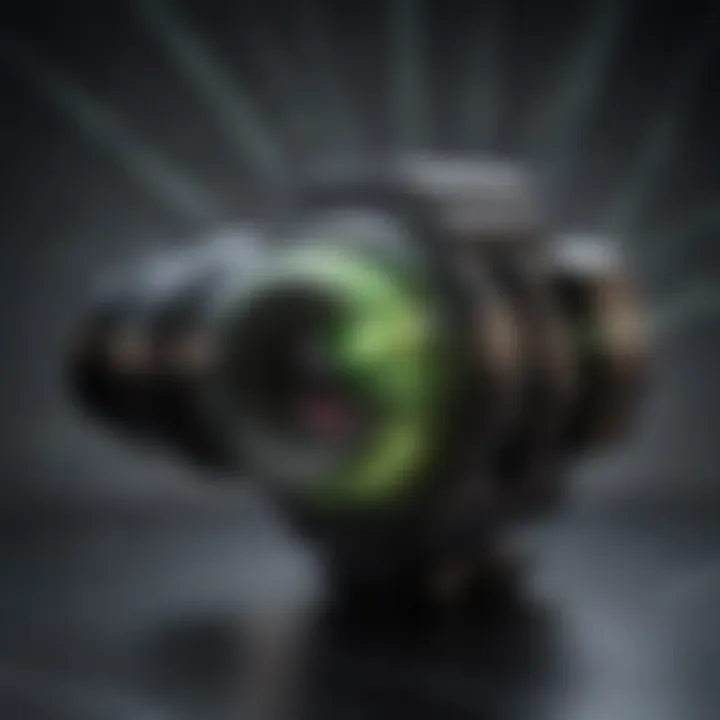
Intro
High power CO2 lasers are a fascinating synthesis of physics and engineering, widely utilized across various industries. They utilize carbon dioxide as the primary gain medium, producing wavelengths of light that can efficiently cut, engrave, or even perform delicate surgical procedures. Understanding how these systems operate is vital for professionals in fields such as manufacturing, healthcare, and scientific research. This article is intended to provide a comprehensive overview of these lasers, from their foundational principles to their real-world applications.
Recent Advances
As we journey into this domain, it's hard to ignore the rapid strides made in the technology around high power CO2 lasers. These advances, which blend discovery and innovation, have expanded their capabilities significantly.
Latest Discoveries
Recent studies have revealed how modifying the gas mixture in the laser can enhance output power and efficiency. Researchers are experimenting with isotopes of elements like nitrogen and helium, which can improve laser performance. Moreover, breakthroughs in optical coatings are allowing higher reflection rates, thus increasing the overall efficiency of the beam generation.
Technological Innovations
The latest innovations are also seeing CO2 lasers integrated with computer-controlled systems. This allows for more precise cutting and engraving, making applications in fabrication and art not just more accessible, but also more diverse. Incorporating 3D modeling software with laser-cutting techniques is revolutionizing industries as designers and fabricators can collaborate seamlessly.
"The integration of high power CO2 lasers with modern design software is akin to giving artists a new brush to create intricate pieces of cutting-edge art and technology side by side."
Methodology
To fully appreciate the nuances of high power CO2 lasers, one must examine the methodologies employed in their research and application.
Research Design
Studies often employ a mix of qualitative and quantitative research methods. Experimental setups might entail small-scale simulations followed by large-scale applications to test efficiency rates and cut quality. Control groups are critical, especially when modifying parameters like gas composition or power input.
Data Collection Techniques
Data is meticulously gathered using high-speed cameras and thermal imaging to analyze laser interactions with various materials. Sensors measure the temperature and speed of the laser while in operation, providing valuable insights into its efficiency and performance under varied conditions. Such methodologies not only clarify operational characteristics but also help in informing users about safety considerations and best practices.
As we delve into the inner workings of high power CO2 lasers in the subsequent sections, we will explore the physics of laser generation, cooling mechanisms, and an array of applications that highlight their pivotal role in current scientific practices. Understanding these concepts is crucial for anyone involved in research, education, or industry as we navigate the future of laser technology.
Prelude to CO2 Lasers
When stepping into the world of high power CO2 lasers, one finds a realm where sophisticated technology meets practical application. This introduction serves as a gateway, offering insight into the necessity of understanding these powerful tools. High power CO2 lasers are not only a hallmark of modern engineering; they also represent a confluence of physics principles, innovative designs, and vast industry applications. The laser's capability to cut, etch, and weld materials with precision underscores its importance.
The principal aim of this section is to set the stage for exploring historical developments and the fundamental principles governing CO2 lasers. By grasping its evolution and scientific foundation, readers can appreciate its role in contemporary applications across sectors like manufacturing, medicine, and cutting-edge research. In particular, we'll touch on key benefits:
- Efficiency in material processing: CO2 lasers provide high precision and speed in cutting and engraving tasks.
- Versatility: Their application stretches from simple tasks to complex procedures in various industries.
- Advancements in safety protocols: Understanding the technology allows for improved operational safety measures.
This section dives deep into the layers of knowledge necessary to comprehend high power CO2 lasers, from the first designs that lit up the laboratory floors to the intricate workings that drive today's innovations.
Characteristics of High Power CO2 Lasers
High power CO2 lasers are a significant piece of technology, and their characteristics play a vital role in determining their applications. These lasers are primarily defined by their unique wavelength, efficiency, and beam quality. Understanding these elements is essential for anyone involved in fields utilizing such technology, including manufacturing and healthcare. By recognizing how these characteristics influence performance and outcomes, users can make informed decisions when employing CO2 lasers for specific tasks.
Wavelength and Power Levels
The wavelength of a CO2 laser typically ranges from 9 to 11 micrometers, placing it in the far infrared region of the electromagnetic spectrum. This range can drastically alter how the laser interacts with various materials. For example, the strong absorption of CO2 laser light by organic materials makes it a preferred choice in medical applications. The optical properties define what can be achieved with these lasers in terms of cutting, engraving, or welding.
In terms of power, CO2 lasers can reach levels of several kilowatts, which is sufficient for industrial applications like metal cutting and engraving. The higher the power, the more effective the laser is at interacting with materials, allowing it to perform intricate tasks quickly.
Efficiency and Output Quality
Efficiency relates to how well the CO2 laser converts electrical energy into laser output. High power CO2 lasers often exhibit high efficiency, which is crucial in industrial settings where energy consumption directly affects operational costs. %Efficiency ranges from 10% to 20%, some variations achieving even higher rates under optimized conditions.
When discussing output quality, several factors come into play, including pulse duration and beam coherence. A well-focused beam will produce cleaner cuts with less material wastage. This increased precision can improve the final product quality significantly. The balance of efficiency and output quality makes CO2 lasers an attractive option for businesses seeking to optimize their production processes.
Beam Profile and Divergence
The beam profile describes the intensity distribution of the laser beam as it propagates. High power CO2 lasers often exhibit a Gaussian beam profile, which is desirable as it ensures a consistent energy distribution across the beam. This consistency is crucial for applications requiring precision since it influences the laser cutting depth and quality.
On the other hand, divergence refers to how much the laser beam spreads out as it travels. A low divergence indicates that the beam maintains its focus over longer distances, making it more effective for applications that require precision over significant lengths. For example, when a CO2 laser is used in material processing, a lower divergence helps reduce the heat-affected zone, leading to cleaner cuts.


In the realm of high power CO2 lasers, understanding characteristics like wavelength, efficiency, and beam quality directly impacts their practical applications and the effectiveness of their use.
In summary, the characteristics of high power CO2 lasers are critical in defining their function, efficiency, and applicability in various industries. Knowing the interplay between these factors educates users and helps them leverage the true potential of this advanced technology.
Components of High Power CO2 Lasers
The architecture of high power CO2 lasers is crucial in defining their functionality, efficiency, and application versatility. Each component plays a significant role in ensuring that the laser operates at its optimal capacity and delivers the desired results in various settings. Ignoring the importance of these parts would indeed be a disservice to the impressive capabilities these lasers offer across industries like manufacturing, healthcare, and research.
Laser Medium and Gas Mixtures
High power CO2 lasers primarily derive their energy from a gas mixture that includes carbon dioxide. This gas is mixed with other gases like nitrogen and helium to enhance the laser's efficiency and output. The nitrogen helps with energy transfer by rapidly transferring energy to the CO2 molecules through collisions. Helium, on the other hand, assists in maintaining the gas discharge and cooling it down.
The characteristic of the laser medium is crucial because it directly influences the wavelength of the emitted light. The specific selection of gas mixtures determines not only the performance but also affects the laser's stability and overall lifespan.
Resonator Designs
Resonators are vital for establishing the optical cavity essential for the laser's operation. They reflect the emitted photons back through the laser medium, allowing for further amplification. Two popular designs in high power CO2 lasers are planar and folded resonators.
Planar Resonators
Planar resonators are recognized for their simple yet effective design. They consist of two parallel mirrors placed face-to-face. This structure allows for a straightforward path for light to bounce back and forth, resulting in stable performance.
The key characteristic of planar resonators is their ability to maintain high beam quality and consistency. They are often favored for applications requiring precision as they generate a more uniform beam profile. However, the disadvantage lies in their length; longer planar resonators can become cumbersome and harder to manage.
Folded Resonators
On the flip side, folded resonators utilize a more compact design. By employing mirrors at angles, they maximize the effective length of the resonator while minimizing the physical footprint. This feature is particularly beneficial in environments with limited space.
The folded design typically provides superior beam quality and can be fine-tuned to optimize efficiency. However, it can be more complex to fabricate and align due to the number of mirrors involved, which may introduce inconsistencies if not managed properly.
Cooling Systems
Maintaining proper operating temperatures is critical for the longevity and consistent performance of high power CO2 lasers. Different cooling systems can be employed based on the specific requirements and application of the laser.
Water Cooling
Water cooling is commonly used due to its efficiency in heat dissipation. The system allows for continuous circulation of water, helping to keep the laser head at optimal temperatures during extended use. This characteristic makes water cooling a popular choice among industrial applications, as it provides reliable temperature management without significantly impacting performance.
One unique feature of water cooling is its ability to accommodate higher power outputs without risking overheating. However, the downside may include the need for a comprehensive setup that involves pumps and handling, which could increase maintenance requirements and complexity.
Air Cooling
In contrast, air cooling is more straightforward and requires less infrastructure. It relies on airflow to dissipate heat. This system can be more advantageous in temporary setups where portability is desired or when the power levels are manageable enough not to generate excessive heat.
Although air cooling is easier to implement, it may not be as effective for high power applications. The efficiency of heat removal can be limited, which poses risks of overheating during prolonged use.
With a deep understanding of these components, one can appreciate how they contribute significantly to the overall performance of high power CO2 lasers, making them indispensable tools across various industries.
Operational Modes of CO2 Lasers
The operational modes of CO2 lasers play a pivotal role in their functionality and application. Understanding these modes not only enhances the efficiency and precision of laser technology, but it also determines the best use cases across various sectors. There are two primary operational modes: Continuous Wave (CW) mode and Pulsed mode.
Continuous Wave (CW) Mode
Continuous Wave (CW) mode delivers laser light in a steady, uninterrupted stream. The benefits of this mode are particularly noticeable in applications requiring consistent and high-quality output. In industries like engraving or cutting, where precision is paramount, CW mode provides a uniform power level that aids in achieving clean cuts and detailed engravings. The stability of output in CW mode is essential, making it suitable for machining metals, plastics, and other materials.
Moreover, the consistent thermal profile in CW applications helps to minimize heat-related distortions in the material being worked on. This leads to higher-quality finishes and reduces the likelihood of worker error, as the predictable nature of the laser output facilitates easier control over the machining process.
Pulsed Mode
Pulsed mode allows for the emission of laser light in short bursts rather than a continuous beam. This operational mode is often sought after for applications that require high peak power for a limited duration. Two main types of pulsed lasers are notable: Q-Switched Lasers and Mode-Locked Lasers. Their characteristics and benefits warrant a closer look.
Q-Switched Lasers
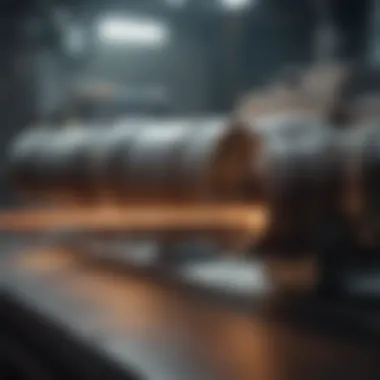

Q-Switched lasers excel in delivering high-peak power pulses by employing a technique that creates a high intensity in a short time frame. This mode is particularly beneficial for applications such as material ablation, where controlled removal of material is critical. The key characteristic of Q-Switched lasers is the ability to produce very brief pulses, often in the nanosecond range. This results in a powerful, focused energy that can vaporize material with great precision, making them popular in fields like micro-machining and laser marking.
Another unique feature of Q-Switched lasers is their effectiveness in minimizing thermal damage to the surrounding material. Since the pulses are so short, there is less time for heat to spread, reducing the risk of harmful thermal effects. This makes Q-Switched lasers ideal for delicate applications, like laser tattoo removal or medical procedures, where preserving the integrity of adjacent tissue is crucial.
"Using Q-switched lasers ensures that the focus remains sharp while minimizing collateral damage to surrounding areas."
Mode-Locked Lasers
Mode-Locked lasers are another powerful tool in the arena of pulsed lasers. They generate extremely short pulses, often in the femtosecond range, enabling a wide variety of applications in research and medical fields. The key characteristic of Mode-Locked lasers is their ability to produce a series of very fast pulses that contain a broad spectrum of frequencies. This makes them especially useful in fields requiring high precision and speed such as optical coherence tomography, which is vital in ophthalmology.
A unique feature of Mode-Locked lasers is their capability to perform nonlinear optical processes. This opens the door to applications in spectroscopy and various forms of imaging, extending their utility beyond traditional laser cutting or engraving. However, while they provide fantastic speed and efficiency, they've complexities in design and operation that demand considerable expertise and care in handling.
Applications of High Power CO2 Lasers
The relevance of high power CO2 lasers in various sectors cannot be understated. These lasers have found their niche in industrial, medical, and research applications, demonstrating remarkable efficiency and versatility. They cut, engrave, and weld materials with precision, perform delicate medical procedures, and assist in scientific explorations. The diverse applications stem from their unique properties, including high beam quality and the ability to work with different materials. In this section, we will dive into specific use cases, outlining their impact and significance.
Industrial Use Cases
Metal Cutting
Metal cutting is one of the standout applications of high power CO2 lasers. In industries from automotive to aerospace, precision is king. The ability to cut through metal sheets with remarkable accuracy means manufacturers can create complex parts that meet stringent specifications. High power CO2 lasers' key characteristic lies in their ability to produce high-energy output, resulting in clean cuts with minimal thermal distortion.
One distinct feature of metal cutting using CO2 lasers is their high-speed processing capability. Many industries favor this method because it not only reduces production time but also lowers material wastage. However, the initial investment in high power CO2 laser systems can be steep—this disadvantage might deter smaller businesses but is generally considered worthwhile against the backdrop of long-term savings and efficiencies.
Material Processing
When discussing material processing, high power CO2 lasers shine in applications like engraving, drilling, and even textile cutting. The temperature control and beam profile allow for intricate designs and patterns to be executed—attributes which are particularly useful in fields like fashion and custom product design. The key characteristic here is adaptability. From acrylic to wood, these lasers can efficiently cut through varied materials.
A unique aspect of material processing is that CO2 lasers can work at varying energies depending on the material properties and thickness. This versatility is beneficial as it allows businesses to expand into different types of materials without requiring a complete overhaul of their machinery. Minor drawbacks do exist, such as the slower processing speeds when compared to alternative laser options, primarily in thicker materials.
Medical Applications
Surgery
In the medical field, high power CO2 lasers have revolutionized surgical procedures. They provide a cleaner and more precise alternative to traditional surgical methods, thereby significantly reducing the risk of infection and healing time. The key characteristic of surgery with CO2 lasers is the ability to cut or vaporize tissue without impacting surrounding areas.
One unique feature of using CO2 lasers is the minimal blood loss during procedures. Surgeons prefer this method because better visibility and reduced trauma lead to increased patient safety. However, the disadvantage of these lasers is that they require specific training to operate effectively, which can be a barrier to their widespread adoption.
Skin Treatments
CO2 lasers are also extensively used in dermatology for skin resurfacing and aesthetic treatments. The unique ability of CO2 lasers to remove layers of skin with precision allows for treatments of wrinkles, scars, and other blemishes. The key characteristic here is their effectiveness in stimulating collagen production, leading to an enhanced overall skin appearance.
The distinct aspect of skin treatments using CO2 lasers is their versatility in energy levels. Practitioners can tailor the intensity of each treatment to maximize effectiveness while minimizing side effects. While these treatments can yield amazing results, there is a disadvantage—the recovery time might be significant compared to non-laser treatments, which could deter some patients.
Research and Development
Spectroscopy
In research and development, spectroscopy using high power CO2 lasers has opened new doors in understanding materials' compositions and structures. The ability to analyze light interactions with substances gives researchers deeper insights. The key characteristic of using CO2 lasers in spectroscopy is high sensitivity to specific molecular properties.
One striking feature is that CO2 lasers can target vibrational modes of molecules, providing specific and detailed information. This application is essential in fields ranging from chemistry to environmental science. One downside is that the setup can be intricate, requiring advanced knowledge and equipment.
Laser Induced Breakdown Spectroscopy
Laser Induced Breakdown Spectroscopy is another area where high power CO2 lasers show significant promise. This technique involves the utilization of laser pulses to form plasma on a material surface, allowing for real-time compositional analysis. The key characteristic of this methodology is its efficiency—you can obtain data quickly in a non-destructive way.
A unique aspect of this technique is its ability to analyze materials in various states, including solids, liquids, and gases. The broad applicability makes it a beneficial choice for industries that require rapid testing and data collection. However, the limitations regarding the depth of analysis can pose challenges, as the method may not provide information about deeper layers of material.
High power CO2 lasers are becoming indispensable tools in today's innovative landscape, making their mark across diverse fields, from industrial operations to advanced medical procedures and scientific research.
Safety Considerations
The safe operation of high power CO2 lasers is paramount, especially given their widespread use in demanding environments such as manufacturing and medical facilities. The intensity of the light produced and the heat generated underscore the necessity of implementing stringent safety measures. By focusing on protective equipment and operational protocols, organizations can greatly mitigate risks and ensure the well-being of their personnel. Recognizing the potential hazards associated with lasers is the first step in cultivating a culture of safety.
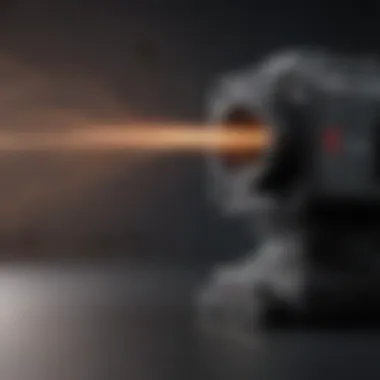
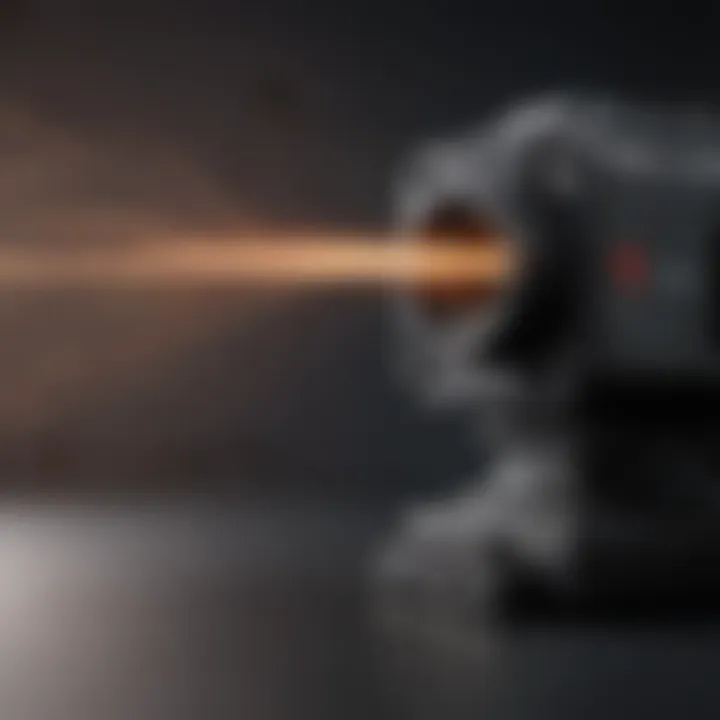
Protective Equipment
When it comes to protective gear, the right equipment serves as your first line of defense against potential laser-related accidents. Wearing appropriate protective eyewear is crucial, as CO2 lasers emit infrared light that is invisible to the human eye. Regular safety glasses simply won’t cut it. Instead, specialized laser safety goggles or face shields, designed to absorb specific wavelengths, must be utilized. These measure reduce the risk of eye injuries that can have serious, long-lasting repercussions.
In addition to eye protection, other personal protective equipment (PPE) plays a vital role in creating a safe working environment. This can include:
- Flame-resistant clothing: Lasers can ignite materials, putting workers at risk. Clothing that resists flames is a must.
- Gloves: Depending on the application, heat-resistant gloves may be necessary for materials handling.
- Aprons or coats: Heavy-duty lab coats can protect against any debris and unexpected splashes or burns.
The implementation of signage and barriers also contributes significantly to safety. Well-placed warning signs alert personnel to the potential hazards associated with CO2 lasers. In high-traffic areas, using physical barriers to restrict access can further protect untrained bystanders from accidental exposure.
Operational Protocols
Beyond personal protective equipment, rigorous operational protocols further enhance safety. Establishing standard operating procedures (SOPs) can prevent accidents and ensure that all personnel are on the same page. These protocols should include:
- Training: Regular training sessions should be held to reinforce the importance of safety practices. Make sure all personnel are familiar with the potential risks associated with CO2 lasers and understand how to operate them safely.
- Maintenance checks: Routine inspection and maintenance of laser equipment ensure that everything functions optimally and catches any potential faults that may pose risks.
- Emergency procedures: It's essential to outline emergency procedures in case of accidents. Personnel must know how to handle situations like accidental exposure or equipment failure.
Additionally, the importance of keeping workspaces organized cannot be overstated. Removing clutter reduces the chance of accidents by minimizing distractions and providing clear paths for evacuation if needed.
"Taking these safety precautions seriously is akin to installing a seatbelt in a car; it's a small step that can save lives."
Future Trends in CO2 Laser Technology
As advances in technology carve out new pathways for industries, the landscape of CO2 lasers is on the brink of significant evolution. In this section, we’ll delve into some emerging trends that reshaping how these powerful tools are utilized. Understanding these trends is crucial not only for practitioners in the field but also for those studying or involved in related disciplines. With the demand for precision and efficiency on the rise, these trends promise enhanced performance and novel applications.
Emerging Innovations
The world of high power CO2 lasers is witnessing a wave of innovations aimed at improving functionality. One of the foremost advancements is in the area of laser sources themselves. New configurations, such as the use of fiber lasers in conjunction with traditional CO2 technology, are being explored. This integration allows for improved beam quality and overall performance. Moreover, the combination can lead to enhanced cutting speeds, especially in industries like automotive and aerospace.
Another area seeing innovation is in control systems. The implementation of artificial intelligence and machine learning algorithms to optimize laser operations has gained traction. These smart systems are able to analyze real-time data, enabling precise adjustments to be made on-the-fly—resulting in optimized material processing and reduced waste.
Furthermore, advancements in resonator designs are noteworthy. Utilizing more complex geometries can significantly boost the effectiveness of CO2 lasers, allowing them to operate at higher efficiencies without compromising power output. This can lead to cost savings for industries reliant on cutting and engraving technologies, where downtime is a significant concern.
"The evolution of CO2 laser technology implies not just advancements in speed and efficiency, but also adaptability to diverse industrial needs."
Sustainability and Energy Efficiency
With growing emphasis on environmental sustainability, high power CO2 laser technology is not being left behind. There is an increasing call for solutions that not only optimize energy use but also minimize carbon footprints. The pursuit of sustainability in laser operations encompasses several crucial aspects.
A vital trend is the development of energy-efficient laser systems. Manufacturers are focusing on designs that consume less energy while delivering the same or better performance. Techniques such as regenerative cooling are being explored; they allow for heat to be recycled back into the system. This reduces the operational load on cooling systems and the overall energy consumption of the laser systems.
Also, there's a shift towards materials that have lower environmental impacts. For instance, manufacturers are investigating alternatives to traditional gas mixtures that could reduce their carbon emissions. Additionally, focusing on recycling and reusing resources in the production processes can lead to significant internal efficiencies.
Moreover, energy recovery systems are being increasingly integrated into laser setups. By capturing and reusing waste heat, these systems contribute substantially to energy conservation efforts in industrial settings, often leading to lower operational costs while also supporting green initiatives in manufacturing.
As industries adopt these emerging technologies and sustainable practices, CO2 lasers can strengthen their roles across various applications, from manufacturing to healthcare, by ensuring they not only meet productivity standards but also adhere to environmental responsibilities.
Closure
The conclusion of this article serves as an essential summation of the crucial insights gathered throughout the exploration of high power CO2 lasers. As we've navigated through their principles and applications, it becomes evident that these lasers are not merely tools; they are pivotal elements in various sectors, like manufacturing and healthcare. Their versatility and efficiency empower numerous advancements in technology, making them a linchpin in both industrial processes and medical treatments.
One critical aspect underscored in this discussion is the balance between innovation and safety. As high power CO2 lasers evolve, understanding their operational intricacies becomes indispensable. Safe usage protocols, protective equipment, and the design considerations of cooling systems are not just regulatory requirements; they are foundational to successful application. This ensures that operators can harness the full potential of CO2 lasers while minimizing risk—a common thread in high-stakes environments.
Another notable point is the emphasis on sustainability and energy efficiency. In an age where environmental considerations are paramount, the improvements in CO2 laser technology reflect a growing awareness among manufacturers and researchers. Demonstrating how to enhance efficiency without compromising performance speaks to the collective responsibility shared by industry stakeholders.
Thus, the concluding section encapsulates the essence of the article, tying together the significance of high power CO2 lasers and their implications for future endeavors. Navigating this landscape requires not just an understanding of the technicalities but also an appreciation for the intricate interplay between innovation, safety practices, and global sustainability efforts.
Summary of Insights
In summary, the examination of high power CO2 lasers has unveiled several key takeaways:
- Technological Advancements: CO2 lasers showcase a remarkable evolution in laser technology, offering various operational modes and configurations that greatly enhance their utility.
- Diverse Applications: Spanning multiple fields, from industrial applications in metal cutting to intricate medical procedures, high power CO2 lasers have established themselves as indispensable tools.
- Safety Protocols: Consistent safety measures and protective equipment remain critical to ensuring operator safety and effective use in high-power contexts.
- Focus on Energy Efficiency: As society pushes toward more sustainable practices, the development trajectory of CO2 lasers mirrors this trend with efforts aimed at maximizing efficiency.
This confluence of technology, application, and safety highlights the profound impact high power CO2 lasers have in shaping contemporary practices across various disciplines.
Final Thoughts
Reflecting on high power CO2 lasers leads to a recognition that we are standing at the edge of further groundbreaking advancements. The integration of high-performance materials in laser components, along with novel cooling systems, indicates a continually evolving field eager to push boundaries.
Ultimately, embracing the full potential of CO2 lasers entails a commitment to continued research and pragmatic application. Those who navigate these advancements, while prioritizing safety and sustainability, will not just benefit their environments; they will redefine the future landscape of technology.
"Innovations in high power CO2 lasers illuminate the path to a future where efficiency and safety go hand-in-hand."















